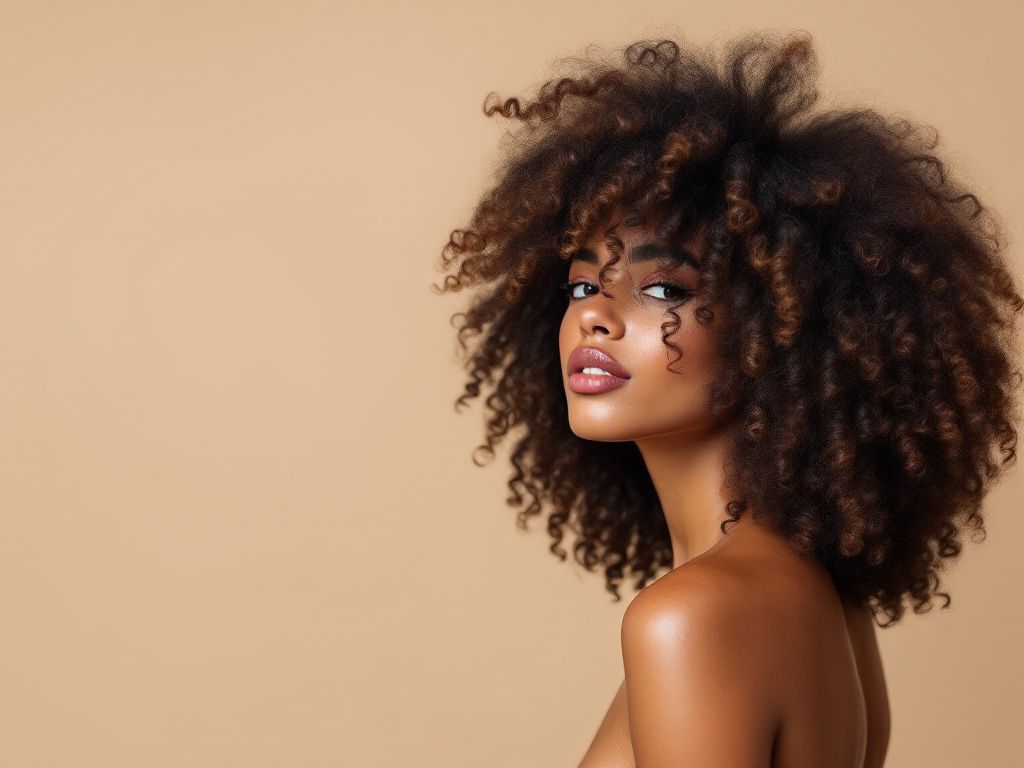
Hair can be a transformative canvas, and there’s nothing quite like witnessing the astounding metamorphosis from straight to curly textures. Seeing this evolution can be nothing short of awe-inspiring, as smooth strands turn into stunning curls that add volume and a dynamic personality to anyone’s look. If you’re embarking on a journey from sleek to curly, or simply intrigued by how these transformations come about, this comprehensive guide is for you. 🍀
With my expertise in the domain and access to the latest research, I aim to demystify the technical intricacies, share authoritative insights, and provide practical guidance for those eager to embrace their curls.
Understanding Hair Texture: A Technical Breakdown
To appreciate the journey from straight to curly hair, it is vital to understand the biology ntly de and the factors contributing to its texture. Hair texture is predominantly determined by three factors: the hair follicle shape, chemical bonds within the hair strands, and genetics.
Follicle Shape and Hair Texture
The shape of hair follicles heavily influences the texture of your hair. Research has shown that:
- Round Follicles produce straight hair.
- Oval Follicles lead to wavy textures.
- Elliptic Follicles result in curly, coiled hair.
The follicle dictates how hair grows out of the scalp. Circular or more rounded follicles allow hair to grow straight, while an elliptic or slightly curved shape causes the strand to curve as it grows, forming waves or curls.
Chemical Bonds: Disulfide Bridges

Another critical factor is the chemical bonds that form between the molecules in your hair. The most significant of these are disulfide bonds, which connect two molecules of cysteine in the keratin, a key protein in hair structure.
- More Disulfide Bonds mean a curlier hair texture tend because they form the internal support that makes hair strand curl or zigzag.
- Stylists and researchers consistently highlight techniques like the curly girl method as highly effective for protecting these structural bonds while enhancing curl formation.
Transitioning to Curl: Analyzing the Straight to Curly Transformation
The Curly Girl Method: A Versatile Approach
While some may naturally have waves and require minimal manipulation, a widely adopted strategy for activating and nurturing curls is the Curly Girl Method (CGM). Originated by Lorraine Massey, this method offers comprehensive steps and guidelines, based on scientifically sound principles to preserve hair integrity while encouraging curls.
Key Principles:
- Eliminate Sulfates and Silicones: These can strip hair of natural oils, affecting texture.
- Moisture, Moisture, Moisture: Hydrating products play a vital role in maintaining curl and elasticity.
- Air Drying vs. Heat Tools: Minimizing heat exposure protects disulfide bonds and promotes natural curl formation.
A real-world example: In a case study, a prominent hairstylist received a client with tightly-bound hair scales, negligible curl pattern, and significant product build-up. Implementing CGM, and focusing on moisture-rich, sulfate-free products, the client’s natural curl reemerged within a month, showcasing how crucial management theories can make a significant impact.
From Knowledge to Practice: Practical Tips for Curl Lovers
Adopting a texture transformation involves both learning and consistent implementation. Here are industry-standard practices recommended by leading experts:
Understanding Product Ingredients
An unwavering focus on ingredient lists can considerably affect curl manageability:

- Wanted Ingredients:
- Humectants (i.e., glycerin, aloe vera) to retain moisture.
- Oils & Butters like jojoba or shea which lock in moisture.
- Opt for Protein-Rich Products: Utilizing silk or keratin can fill gaps in strands for support.
Building a Routine with a Vision
Just like craft brewing, consistency ensures the outcome is dependable every time. Schedule hydration treatments and follow with styling products that both moisturize and hold.
Transition Techniques:
- Rake & Scrunch: Ensures products evenly coat before letting gravity and drying activate curls.
- Diffuse on Low Heat: If mandatory, add volume without risking damage.
Encouraging Natural Curl Pattern: Exercise Control
Adopt tactile, gentle approaches:
- Co-Washing: A gentle non-sudsing strategy to curb excessive oil stripping.
- Finger Detangling: Helps maintain integrity of individual hair strands.
Statistics & Data: The Changing Trends
Reports from market research firms underscore the rising popularity and acceptance of natural textures:
- There’s been a *35% increase in consumers opting for natural curl enhancement products over chemical relaxing since 2017*.
- Surveys indicate a **40% uptick in salon requests for texture-specific services rather than general straightening in recent years.
A Look at the Industry’s Influence

This burgeoning demand indicates a cultural and perceptual shift, likely influenced by an enhanced understanding of product impact, boosted by influencers and global brands advocating authenticity and natural beauty.
Real-World Transformation Stories: The Hair Chronicles
To further illustrate these shock-to-curly stories, let’s explore several courageous personal journeys:
Case Study: Sarah, The Diver
Sarah had about what you’d define as “stick-straight hair,” which, given her professional diving career, suffered extensive surface damage from consistent exposure to salt and chlorinated water. She tackled this with a personalized program that emphasized hydrating oils and proteins as recommended by her trichologists. Within four months of dedicated care using curl-specific protocols, Sarah discovered waves she never knew were possible.
Case Study: A Teen’s Transition
Michael, at eighteen, decided to transition from sharply-styled spiked hair to harnessing the natural curl he’d only heard about his aunts reminiscing. Making concerted efforts to follow research-backed techniques—eliminating sulfates and leaning into diffusing after washes—Michael saw his transformation to bouncy curls in just six months; a nod to genetic predisposition surfacing with a supportive routine.
Error-free implementation, as the transformations exemplify, combines scientific understanding with methodical execution, creating textures many once deemed impossible. 🎈
Conclusion
Understanding the transition from straight to curly hair is harnessing both science and artistry. As this guide highlights, embracing a curly texture can be achieved through proven scientific concepts—adhering to correct routines and harnessing the body’s natural processes by protecting structural integrity.
Ultimately, the decision to embrace curls is both a personal journey and a technical endeavor; it is essential to evolve practices as both individual vision and scientific understanding advance. With dedication to best practices and an authentic, unyielding commitment to growth, anyone daring enough to curate their transformation can create stunning masterpieces that showcase curls in all their unreal beauty. 🌟
Frequently Asked Questions
What are the benefits of using a hair mask in my hair care routine?
Using a hair mask can provide several benefits, including hydration, smoothing, strengthening, curl definition, heat protection, and damage repair. Hair masks infuse the hair with moisture, help coat the hair shaft to seal split ends, reduce breakage, and protect the hair from heat styling and environmental damage[1][4].
What ingredients should I look for in a hair mask?
Effective hair masks often include ingredients such as coconut oil, argan oil, shea butter, honey, avocado oil, green tea, and coconut water. These ingredients provide nourishment, moisturize, and protect the hair, offering benefits like softening, moisturizing, and protecting against damage[2][5].
How often should I use a hair mask in my routine?
You should use a hair mask whenever your hair feels dry, unmanageable, or in need of intense hydration. This can vary depending on your hair type and needs, but generally, using a hair mask once or twice a week can help maintain healthy and moisturized hair[1][4].
How do I apply a hair mask for the best results?
To apply a hair mask effectively, shampoo your hair first, then apply the mask, focusing especially on the ends where hair tends to be the most damaged. Leave the mask on for anywhere from 10 minutes to overnight, depending on the type of mask and your hair’s needs[1][4].
References


Leave a Reply